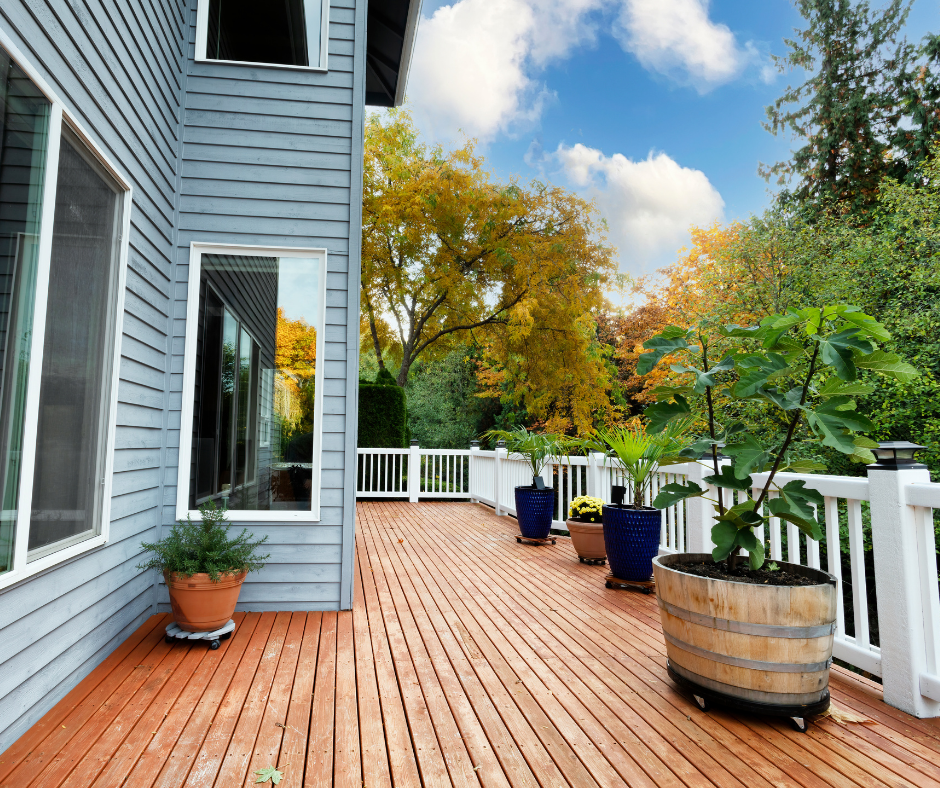
How To Prevent and Remove Mold From Your Home’s Cedar Exteriors
Even the most well-maintained cedar home can encounter a few minor issues over time. From light rain to sweat and salt water, your home’s exterior may also suffer from some dampness. If you suspect that your home’s cedar exteriors has been damaged by excess moisture or mold, don’t panic. Instead, take steps to prevent future problems and treat the first signs of mold before it grows into a larger issue.
Cedar is an excellent wood for outdoor living spaces because it resists rot, shrinks back when pressed, and doesn’t grow algae in standing water. That said, its natural oils also make it susceptible to excessive moisture and other environmental threats. Combined with its porous nature, this makes cedar homes especially vulnerable to harmful mold spores. Fortunately, you can protect your home from future damage by preventing the growth of new molds and removing existing ones immediately if they appear.
Prevent Mold from Growing
We’ve all seen what happens when a home’s cedar walls and roof get damp from excess moisture. In some cases, this moisture can cause the wood to swell and crack and encourage the growth of harmful mold. The most effective way to prevent mold from growing on your home’s cedar exteriors is to prevent excess moisture from entering in the first place. If your home shares a wall with a neighboring property, consider caulking your cedar to keep out moisture.
To help prevent mold from growing in your home, keep the following tips in mind:
- Seal your home’s exterior to prevent moisture from entering. This includes caulking any gaps around doors and windows and your roof, siding, or foundation. Consider installing a roof or exterior drainage system to prevent water from pooling on your home’s exterior during particularly heavy rain.
- Avoid watering your plants during periods when it is raining heavily or during high humidity days. Existing plant materials and paved surfaces are more prone to absorbing excess moisture than surrounding dirt, which increases the risk of mold if they get damp.
- Avoid overwatering your lawn, garden, or landscaping plants. Even if you live in a humid area, excess moisture can damage plants’ roots and cause them to die over time.
Check for Basement Flooding
Flooding can damage your home’s cedar walls, floors, ceilings, and any valuables stored in your basement. A basement’s floodwater is also a serious threat to your home’s cedar exteriors. If you live in an area susceptible to flooding, especially during heavy rain, take steps to prevent basement flooding. This includes installing a sump pump or water-absorbing mat to prevent water from pooling in your basement during heavy rain. Also, If your home shares a wall with a foundation prone to seepage, consider capping the wall’s opening with a brick or concrete wall.
Learn the Signs of Mold
Most homeowners assume that a musty or yeasty smell is a sign of mold when it is a sign of excess moisture. Mold spores are microscopic, making it difficult to identify them in the air, let alone see them. Other signs of mold are black or green patches on walls or ceilings. If you notice a musty or yeasty odor in your home, open the windows and fan the air with a dehumidifier to see if the smell improves. You may have excess moisture in your home’s air if it does.
Treat Any Mold That Appears
Mold is an insidious problem, and it can be difficult to get rid of. Fortunately, there are a few ways to prevent mold growth in your home. One of the best ways to protect your home’s cedar exterior from future damage is to clean it with vinegar regularly. By cleaning your home’s exterior with vinegar, you can keep it free of any dirt, dust, and grime that could encourage mold.
If you notice water damage on your windows or doors, you’ll also want to neutralize the air in these areas. This can help to remove any mold spores that have been released. To neutralize the air, you can use an air purifier to help remove airborne mold spores. Alternatively, you can use an air freshener, which comes in various scents and sprays.
Conclusion
Following these simple tips, you can keep your home’s cedar exterior in top condition. Regularly cleaning it and neutralizing the air can prevent mold from taking hold. In the event that you do notice signs of water damage, you can take steps to repair it quickly to avoid further damage. With a bit of care and attention, your cedar home will continue to look beautiful for years to come.
